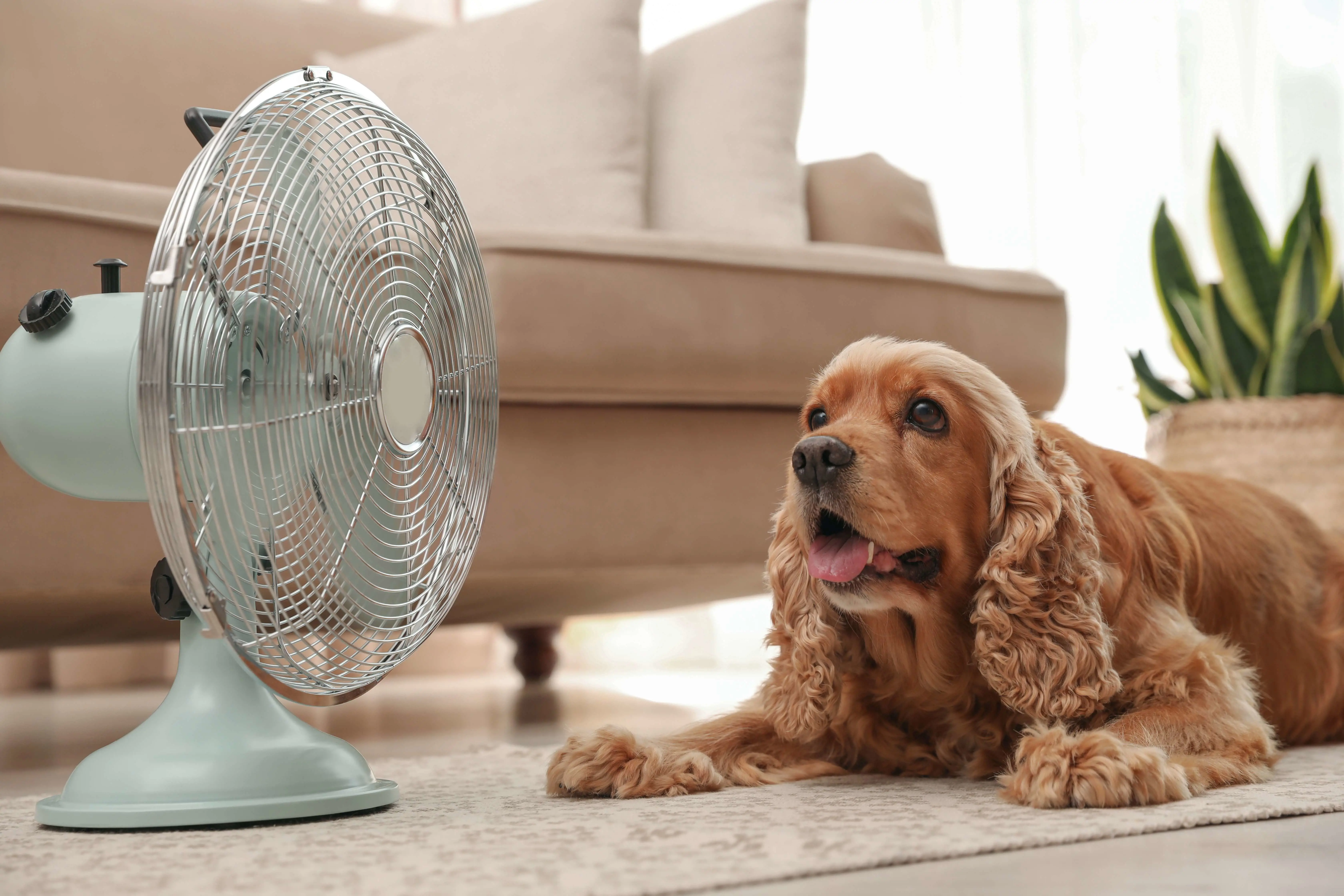Battling discolouration: Your ultimate guide on how to treat hyperpigmentation in dogs
7th August, 2023

Introduction to hyperpigmentation in dogs
You've probably noticed some changes in your dog's skin and coat over time. Perhaps you've spotted darker skin pigment, uneven skin tone, or even hair loss.
If so, your dog might be suffering from hyperpigmentation. In this ultimate guide, you'll learn how to treat hyperpigmentation in dogs and help your furry friend get back to their healthy, happy self.
Hyperpigmentation is a common skin condition in dogs characterised by an increase in the production of melanin, the pigment responsible for the colour of their skin and hair.
This can lead to the appearance of dark spots, patches, or a general darkening of the skin. Although hyperpigmentation itself is not harmful or painful, it could be a symptom of an underlying disease that needs attention.
As responsible and caring pet parents, it's important to educate yourself about this condition, its causes, and effective treatments. This guide will provide you with all the information you need to identify, diagnose, and treat hyperpigmentation in your canine companion.
What is hyperpigmentation?
Hyperpigmentation is a condition where your dog's skin becomes darker and thicker in certain areas. It is not a disease in itself but rather a reaction to other conditions affecting the skin. There are two types of hyperpigmentation: primary and secondary.
Primary hyperpigmentation
Primary hyperpigmentation is a rare, breed-specific condition that mainly affects Dachshunds. Signs of this type of hyperpigmentation are usually evident by the time your dog is one year old.
Secondary hyperpigmentation
Secondary hyperpigmentation is a more common condition that can occur in any breed of dog. It is often caused by underlying health issues such as:
- Obesity
- Hormonal imbalances
- Allergies
- Contact dermatitis
- Skin infection
- Inflammation or friction may also trigger secondary hyperpigmentation.
Understanding the causes of hyperpigmentation
Before diving into how to treat hyperpigmentation in dogs, it's crucial to understand the various factors that can cause this condition. Some of the most common causes include:
- Inflammation: Chronic skin irritation or inflammation can lead to an increase in melanin production, resulting in hyperpigmentation. This can be caused by skin infections, allergies, or constant friction from collars and harnesses.
- Hormonal imbalances: Hormonal imbalances, such as hypothyroidism or Cushing's disease, can also cause hyperpigmentation in dogs. These conditions can affect your dog's metabolism and result in changes, including darkening and thickened skin.
- Genetics: Some dog breeds are more prone to hyperpigmentation than others. For example, Dachshunds, Bulldogs, and Pugs are more likely to develop the condition due to their genetic predisposition.
- Medications: Certain medications, like corticosteroids, can cause changes in your dog's skin colour and texture, leading to hyperpigmentation.
- Underlying health conditions: Sometimes, hyperpigmentation can be a sign of a more serious health problem, such as autoimmune diseases or skin cancer.
Identifying the dog's symptoms of hyperpigmentation
Now that you're familiar with the causes of hyperpigmentation, it's time to learn how to identify the skin symptoms. Recognising the signs early on is essential for effective treatment and management.
Some common symptoms of hyperpigmentation in dogs include:
- Dark spots and patches: The most obvious sign of hyperpigmentation is the presence of dark spots or patches on your dog's skin. These can range from small, isolated areas to larger, more widespread patches.
- Uneven skin tone: Hyperpigmentation can also cause your dog's skin to become uneven in colour, with some areas appearing darker than others.
- Hair loss: In some cases, hyperpigmentation may be accompanied by hair loss in the affected areas.
- Skin thickening: As hyperpigmentation progresses, your dog's skin may become thicker and more leathery in texture.
- Itchiness and irritation: Depending on the underlying causes, your dog may experience itchiness and irritation as a result of hyperpigmentation. This can lead to excessive scratching and further skin damage.
How to diagnose canine hyperpigmentation
If you suspect that your dog is suffering from hyperpigmentation, it's essential to consult with a veterinarian for a proper diagnosis.
Your vet will begin by conducting a thorough physical examination, during which they will inspect your dogs skin for signs of hyperpigmentation, inflammation, and other abnormalities.
They may also ask about your dog's medical history, including any medications they may be taking and any known allergies.
To determine the underlying cause of the hyperpigmentation, your vet may recommend additional diagnostic tests such as:
- Blood tests
- Skin scrapings
- Skin biopsies
These tests can help identify any underlying infections, hormonal imbalances, or other health issues that may be causing the dark pigmentation.
The importance of treating hyperpigmentation
While hyperpigmentation itself may not be harmful or painful, addressing the condition is essential for several reasons. First, by treating hyperpigmentation, you'll be addressing any underlying health issues that may be causing it, ensuring your dog's overall health and well-being.
Second, if left untreated, hyperpigmentation can lead to further skin damage and complications. For example, constant scratching and irritation can result in open sores, infections, or scarring.
Lastly, treating hyperpigmentation can improve your dog's quality of life by reducing any discomfort, itchiness, or irritation they may be experiencing. This will ultimately lead to a happier, healthier dog.
Top natural remedies for treating hyperpigmentation in dogs

If you're wondering how to treat hyperpigmentation in dogs naturally, there are several remedies you can try. These options can help manage the condition and alleviate some of the symptoms without the use of harsh chemicals or medications.
Some popular natural remedies include:
- Aloe vera: Aloe vera is known for its soothing and anti-inflammatory properties. Applying pure aloe vera gel to the affected areas can help reduce skin inflammation and promote healing.
- Coconut oil: Coconut oil has natural antibacterial and antifungal properties, making it an effective treatment for skin infections that may be causing hyperpigmentation. Gently massage coconut oil into your dog's skin daily to help reduce irritation and inflammation.
- Apple cider vinegar: Diluted apple cider vinegar can help restore your dog's skin's natural pH balance, reducing inflammation and itching. Mix equal parts apple cider vinegar and water, then apply the solution to the affected areas using a cotton ball.
- Oatmeal bath: An oatmeal bath can provide relief for itchy, irritated skin. Grind oatmeal into a fine powder and add it to a warm bath. Allow your dog to soak for 10-15 minutes before rinsing thoroughly.
- Vitamin E oil: Vitamin E oil is an antioxidant that can help protect and repair your dog's skin. Apply a small amount of vitamin E oil to the affected areas daily to help reduce inflammation and promote healing.
Veterinary treatments for dogs hyperpigmentation
In some cases, veterinary intervention may be necessary to address the underlying cause of hyperpigmentation and provide your dog with relief.
Depending on the cause, your vet may recommend one or more of the following treatments:
- Topical medications: For skin infections or allergies, your vet may prescribe a topical medication, such as an antibiotic or corticosteroid cream, to treat the inflammation and irritation.
- Oral medications: If your dog's hyperpigmentation is caused by a hormonal imbalance or other systemic issue, your vet may prescribe oral medications to address the underlying problem.
- Laser therapy: In some cases, laser therapy may be used to reduce the appearance of hyperpigmentation and stimulate skin healing.
- Surgery: If your dog's hyperpigmentation appears to be the result of a tumour or other growth, surgical removal may be necessary.
Always consult with your veterinarian before starting any new treatment, as they can provide guidance on the most appropriate course of action for your dog's specific needs.
Preventing hyperpigmentation in dogs: Tips and tricks
While it may not always be possible to prevent hyperpigmentation in dogs entirely, there are several steps you can take to minimise the risk and keep your dog's skin healthy:
- Regular grooming: Regular grooming, including brushing and bathing, can help remove dirt, debris, and allergens from your dog's skin and coat, reducing irritation and inflammation.
- Proper nutrition: A balanced diet, rich in essential nutrients, can support your dog's overall health and help maintain healthy skin and coat.
- Avoid allergens: If you know your dog has allergies, do your best to avoid any known allergens, such as certain foods or environmental factors like pollen or dust.
- Monitor for signs of illness: Regularly check your dog for signs of illness or discomfort and consult with your veterinarian if you notice any changes.
The role of diet and supplements in managing hyperpigmentation
A balanced diet is essential for maintaining your dog's overall health, and this includes their skin and coat. In some cases, dietary changes or supplements can help manage hyperpigmentation and support healthy skin.
Some nutrients that may be beneficial for dogs with hyperpigmentation include:
- Omega-3 fatty acids: Omega-3 fatty acids, found in fish oil and flaxseed oil, can help reduce inflammation and promote healthy skin. Adding a high-quality omega-3 supplement to your dog's diet may be beneficial in managing hyperpigmentation.
- Vitamin E: As mentioned earlier, vitamin E has antioxidant properties that can help protect and repair your dog's skin. Incorporating foods rich in vitamin E, such as spinach and almonds, or adding a vitamin E supplement to your dog's diet may help improve skin health.
- Biotin: Biotin, also known as vitamin B7, is essential for maintaining healthy skin and hair. A biotin-rich diet or supplement can support your dog's skin health and help manage hyperpigmentation.
Always consult with your veterinarian before making any significant changes to your dog's diet or adding new supplements, as they can provide guidance on the most appropriate options for your dog's specific needs.
Managing hyperpigmentation for a healthier, happier dog
Understanding how to treat hyperpigmentation in dogs is essential for ensuring your furry friend's overall health and well-being. By educating yourself on the causes, symptoms, and treatments, you can take the necessary steps to address the condition and provide your dog with the care they need.
Remember to consult with your veterinarian for guidance on the most effective treatment options and monitor your dog's skin for any changes.
To get a dog insurance quote for your furry friend, you can get a quote through our website by clicking here. If you would like to talk to one of our dog insurance team, you can get in touch with us on 0330 102 5748.
Helpful Pages
Recent Posts
Pet Insurance Quote
- 98% claims paid *
- Claims paid directly to vets
- 24/7 vet video consultations
- Interest free monthly payments




